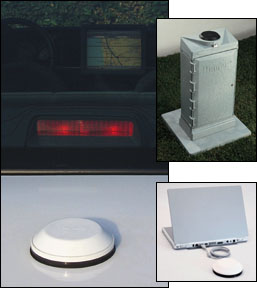Search Case Studies
End-Use Case Study
- Customizable Dielectrics Improve Antenna Performance

Antenna components made of materials with high dielectric constants or dissipation factors cause an increase in the signal loss factor—the amount of energy absorbed and converted to heat by the material. Generally, conductive materials reflect signal waves; conversely, the low reflective properties of thermoplastics allow the signal to pass to the circuits unimpeded. RTP Company has extensive experience formulating and compounding thermoplastic materials to specific dielectric constants ranging from 2.1 to 12.0. This enables manufacturers to select materials that complement their antenna design, optimizing signal strength available to devices.
To house the advanced electronics necessary for modern communications, Antenna Plus required a robust housing that is strong, impact-resistant and impervious to both a wide range of temperatures and weather conditions. Most importantly, the housing material had to allow the electro magnetic signal to reach the antenna with minimal loss of strength. RTP Company product development engineers formulated an RTP 100 Series reinforced polypropylene (PP) compound to meet these requirements for Antenna Plus’ housing. According to Bill Liimatainen of Antenna Plus, “Customizable dielectric properties lets RTP Company supply us with a compound matched to the antenna, which eliminates our need to tweak each design for the most favorable signal penetration.”
A special UV stabilizer in the PP compound ensures long-term outdoor performance and allows Antenna Plus to meet the UL requirements expected by its customers. A tailored combination of milled glass and glass beads adds both strength and dimensional stability. Liimatainen noted, “The material molds extremely flat for PP, with no warp and an exact, consistent shrinkage. These characteristics allow us to use the same material in many of our products.” He continued, “We’ve tested others and have yet to see a material with the consistency of the RTP Company supplied compound, and that’s critical to our success. The consistency extends to both production and long-term performance, allowing for a smooth, efficient manufacturing process.”
Antenna Plus, LLC manufactures and markets low profile antennas for the two-way communications market from their facilities in Arizona and Wisconsin. For more information, visit their website at www.antennaplus.com.




